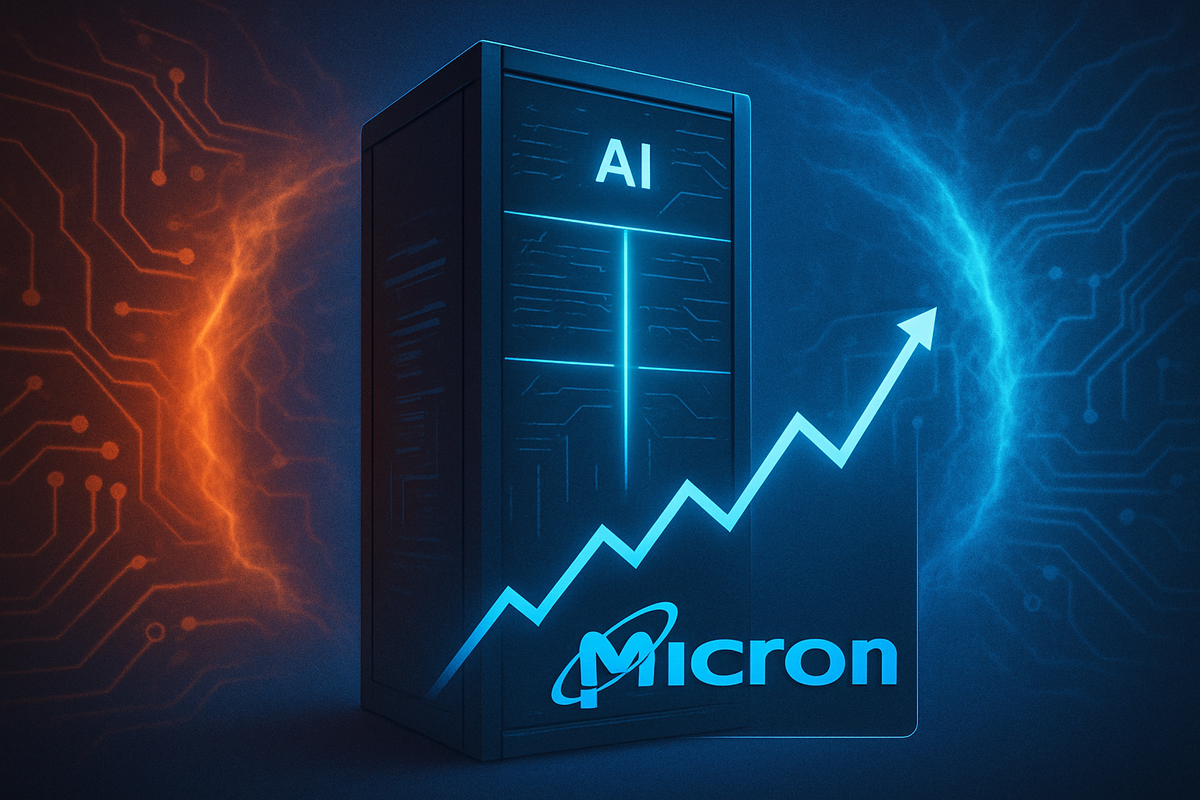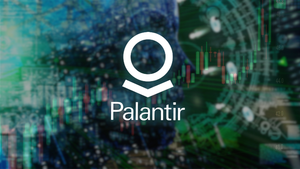
Micron Technology (NASDAQ: MU) has been riding the crest of the artificial intelligence (AI) wave, reporting robust financial results and a significant surge in its stock price over the past year. The memory giant's strong performance, particularly in high-bandwidth memory (HBM) crucial for AI infrastructure, has largely been met with bullish investor sentiment. However, beneath the surface of this AI-driven boom, growing competition fears, ranging from potential HBM oversupply to the aggressive expansion of rivals and persistent challenges in the NAND market, cast a shadow of cautious optimism over the company's long-term trajectory.
As of October 2025, while Micron has solidified its position as a key player in the burgeoning AI memory segment, the escalating competitive landscape presents immediate implications for its market share and future pricing power. The industry is bracing for a potential shift in dynamics by 2027, as competitors aggressively ramp up production, potentially leading to a more challenging environment for Micron to sustain its current growth momentum and premium valuations.
AI-Fueled Ascent Meets Headwinds in a Crowded Market
Micron Technology's recent financial disclosures have painted a picture of remarkable growth, primarily propelled by the insatiable demand for AI-driven computing. The company's fiscal fourth-quarter (Q4) 2025 earnings report was a blockbuster, with revenue hitting $11.32 billion, a 46% year-over-year increase, and adjusted earnings per share (EPS) of $3.03, both comfortably surpassing analyst expectations. This stellar performance capped a record fiscal year 2025, where total revenues climbed to $37.38 billion, a 49% increase from the previous year, with net income surging by an astounding 998% to $8.5 billion. The data center segment, a direct beneficiary of the AI explosion, emerged as a dominant force, contributing 56% of total revenue with impressive gross margins.
Despite these impressive figures and an overall bullish outlook from Wall Street, the specter of heightened competition looms large. A primary concern revolves around the high-bandwidth memory (HBM) market. While Micron has successfully sold out its HBM capacity for 2025 and much of 2026, industry watchers are predicting a potential oversupply by 2027. This anticipated glut is largely driven by the aggressive manufacturing expansion efforts of key rivals, notably SK Hynix (KRX: 000660) and Samsung Electronics (KRX: 005930), who are pouring resources into developing and deploying new HBM4 chips. This aggressive output from competitors could erode Micron's pricing power and moderate its revenue growth in the lucrative HBM sector, shifting the balance of power towards major AI customers like NVIDIA (NASDAQ: NVDA) and Advanced Micro Devices (NASDAQ: AMD).
The competitive pressure extends beyond HBM. SK Hynix is poised to potentially overtake Samsung as the leading DRAM supplier by revenue in 2025, and together, Samsung and SK Hynix command approximately 70% of global DRAM production and an even higher 80% of the HBM market. This dominant duopoly presents a significant hurdle for Micron in expanding its market share, particularly in cutting-edge HBM technologies where SK Hynix currently holds an advantage in customer sampling. Recent strategic alliances, such as the partnership between OpenAI, SK Hynix, and Samsung Electronics, further underscore the intense battle for AI memory supply and highlight the challenge for Micron to carve out a larger piece of the pie. Furthermore, the rise of Chinese memory manufacturers like CXMT (ChangXin Memory Technologies) and YMTC (Yangtze Memory Technologies Corp.) in DRAM and NAND flash, backed by substantial domestic investment and policies, adds another layer of global competitive pressure, particularly affecting the NAND segment.
The NAND flash market continues to be a challenging arena for Micron. Persistent oversupply and subdued demand, primarily due to sluggish shipments in consumer electronics and reduced corporate IT investments, have led to price declines since Q3 2024. While Micron, along with other major manufacturers, has implemented production cuts and delayed process upgrades to protect margins, and there are signs of a potential rebound with expected price increases in Q4 2025 for QLC enterprise SSDs, the NAND market remains a volatile segment. These multifaceted competitive pressures, coupled with the inherent cyclicality of the memory industry, despite the current AI-driven "supercycle," mean that investors remain cautiously optimistic, always aware of the potential for future market corrections.
Shifting Tides: Who Wins and Who Loses in the Memory Race
The intensifying competition in the memory market, particularly in the high-bandwidth memory (HBM) segment, creates a dynamic environment where some players are poised to gain significant advantages while others face considerable challenges. Micron Technology (NASDAQ: MU) itself is in a dual position, enjoying short-to-medium-term benefits from its HBM prowess but facing long-term competitive headwinds.
The primary beneficiaries in this evolving landscape are undoubtedly SK Hynix (KRX: 000660) and Samsung Electronics (KRX: 005930). These South Korean giants already command a significant portion of the global DRAM and HBM markets. Their aggressive expansion plans for HBM4 chips and strategic partnerships, such as the recent collaboration between OpenAI, SK Hynix, and Samsung, position them to potentially dominate the future HBM supply chain. By flooding the market with new capacity, they could exert pricing pressure, potentially eroding the premium margins currently enjoyed by HBM suppliers. Their established manufacturing scale and technological leadership, particularly SK Hynix's early lead in HBM4 customer sampling, give them a strong competitive edge. This could translate into increased market share and sustained revenue growth, even if overall HBM pricing moderates.
On the customer side, major AI infrastructure providers and chip designers like NVIDIA (NASDAQ: NVDA), Advanced Micro Devices (NASDAQ: AMD), and even large cloud service providers developing their own AI ASICs stand to benefit from increased competition. A potential HBM oversupply by 2027 would shift pricing power from memory suppliers to these high-volume buyers. Lower HBM costs would reduce their bill of materials for AI accelerators and servers, potentially boosting their profit margins or allowing them to offer more competitive solutions. This dynamic could accelerate the deployment of AI infrastructure, benefiting the entire AI ecosystem.
Conversely, Micron Technology (NASDAQ: MU), while currently strong in HBM, could be among the companies facing significant challenges in the long run if HBM oversupply materializes as predicted. While its current HBM capacity is sold out for 2025 and much of 2026, an influx of competitor supply could diminish its pricing power and force it to compete more aggressively on cost, potentially impacting its profitability and revenue growth post-2026. Furthermore, Micron's vulnerability in the NAND flash market, already grappling with oversupply and weak demand, could be exacerbated by aggressive pricing strategies from Chinese competitors like CXMT (ChangXin Memory Technologies) and YMTC (Yangtze Memory Technologies Corp.). These Chinese players, backed by substantial domestic investment and policies, are rapidly expanding their production capabilities, adding further pressure to the global memory market and making it harder for established players like Micron to maintain market share and pricing stability in this segment.
Smaller, niche memory manufacturers or those without significant HBM exposure could also face increasing pressure. The sheer scale and technological investments required to compete in advanced memory technologies like HBM make it difficult for less capitalized firms to keep pace. The memory industry's inherent cyclicality, amplified by these competitive dynamics, suggests that periods of consolidation or increased financial strain could be on the horizon for those unable to adapt to the rapidly changing market conditions.
Broader Implications and Historical Echoes in the Memory Landscape
The current competitive dynamics surrounding Micron Technology (NASDAQ: MU) and the broader memory market extend far beyond individual company performance, fitting into several overarching industry trends and carrying significant ripple effects. This period is a prime example of the semiconductor industry's cyclical nature, albeit one currently supercharged by the unprecedented demand from artificial intelligence.
The most significant trend is the AI-driven "supercycle" in the memory market. Unlike previous cycles driven by PCs or smartphones, AI demand for high-performance memory, particularly HBM, is creating a sustained period of growth and premium pricing. However, the aggressive capacity expansion by key players like SK Hynix (KRX: 000660) and Samsung Electronics (KRX: 005930) in anticipation of continued AI growth introduces the classic risk of oversupply. This echoes historical memory cycles where periods of high demand led to massive investment in new fabs, eventually resulting in gluts and sharp price corrections. The difference this time is the scale and specialized nature of HBM, which might mitigate some of the traditional "boom and bust" volatility but not eliminate it entirely. The industry is effectively racing to meet current demand while simultaneously risking future overcapacity.
The global supply chain implications are also profound. The concentration of advanced memory manufacturing in a few key players, primarily in South Korea and the U.S., highlights geopolitical sensitivities. Governments worldwide are increasingly focused on semiconductor self-sufficiency, as evidenced by initiatives like the CHIPS Act in the U.S. and similar efforts in Europe and China. The aggressive expansion of Chinese memory manufacturers, such as CXMT (ChangXin Memory Technologies) and YMTC (Yangtze Memory Technologies Corp.), is a direct consequence of these nationalistic policies. Their growth, fueled by domestic substitution mandates, could fragment the global memory market and intensify competition, potentially leading to lower prices globally, but also raising concerns about intellectual property and national security for Western companies.
Regulatory and policy implications are also at play. As the memory market becomes increasingly critical for AI and national security, governments may scrutinize mergers, acquisitions, and strategic partnerships more closely to ensure fair competition and prevent monopolistic practices. Export controls and technology restrictions, particularly those targeting advanced semiconductor manufacturing equipment and designs, could also influence where and how memory chips are produced, impacting the competitive landscape. The recent strategic partnership between OpenAI, SK Hynix, and Samsung Electronics, for instance, could draw attention from antitrust regulators if it's perceived to create an unfair advantage in the AI memory supply chain.
Historically, the memory market has seen periods of intense competition leading to consolidation. The 1990s and early 2000s saw numerous DRAM manufacturers, which eventually consolidated into the current oligopoly of Samsung, SK Hynix, and Micron. While a similar level of consolidation might not be immediately imminent given the current growth, the aggressive competitive maneuvers in HBM and NAND could strain smaller players or those with less diversified product portfolios, potentially leading to future mergers or exits from the market. The current situation is a delicate balance between capitalizing on unprecedented AI demand and managing the inherent risks of overinvestment and aggressive competition, a tightrope walk that memory companies have navigated for decades.
The Road Ahead: Navigating Opportunities and Challenges
The coming months and years will be pivotal for Micron Technology (NASDAQ: MU) and the broader memory industry as they navigate the interplay between soaring AI demand and intensifying competition. Several short-term and long-term possibilities, strategic pivots, and market dynamics are expected to emerge.
In the short term (next 12-18 months), Micron is likely to continue benefiting from its strong position in the HBM market. With its 2025 and much of its 2026 HBM capacity already sold out, the company can expect sustained revenue and profitability from this segment. However, the focus will shift to how effectively Micron can ramp up its HBM3E and future HBM4 production to meet continued demand while simultaneously managing its cost structure to prepare for potential pricing pressure. The NAND market, while showing signs of a potential rebound in Q4 2025 due to production adjustments and enterprise SSD demand, will require careful management. Micron will need to continue optimizing its NAND production and product mix to improve margins and fend off aggressive competition from Chinese players like CXMT (ChangXin Memory Technologies) and YMTC (Yangtze Memory Technologies Corp.). Investors will closely watch quarterly earnings reports for any shifts in HBM pricing, NAND market recovery, and guidance on future capacity expansion.
Looking further ahead into the long term (2027 and beyond), the potential HBM oversupply looms as a significant challenge. Micron's strategic pivot will likely involve a relentless focus on technological differentiation and customer partnerships. To maintain premium pricing and market share, the company must continue to innovate rapidly in HBM4 and beyond, offering superior performance, power efficiency, and integration capabilities. Deepening relationships with key AI customers like NVIDIA (NASDAQ: NVDA), Advanced Micro Devices (NASDAQ: AMD), and major cloud service providers will be crucial to securing long-term design wins and stable demand. Furthermore, diversification beyond pure HBM could become increasingly important. While HBM is critical, exploring and investing in other high-growth memory solutions or adjacent technologies that benefit from AI could provide additional revenue streams and mitigate risks associated with HBM market fluctuations.
Market opportunities will continue to arise from the expanding applications of AI across various sectors, from data centers and autonomous vehicles to edge computing. This structural growth in AI demand is a powerful tailwind. However, the challenge will be capturing this growth efficiently and profitably amidst a more crowded and competitive landscape. Potential strategic adaptations include exploring new manufacturing techniques to reduce costs, investing heavily in research and development for next-generation memory architectures, and potentially forming strategic alliances or joint ventures to share the burden of massive capital expenditures required for advanced memory production. Scenarios could range from a continued "AI supercycle" that sustains high demand and pricing for longer than anticipated, to a more traditional memory downturn if oversupply in HBM or a broader economic slowdown dampens overall demand. The most likely outcome is a moderation of the current premium pricing environment as competition intensifies, requiring Micron to demonstrate its resilience and adaptability.
Concluding Thoughts: Resilience in a Rapidly Evolving Market
Micron Technology's (NASDAQ: MU) journey through the current AI-driven memory boom exemplifies both the immense opportunities and the inherent challenges of the semiconductor industry. The company has showcased remarkable financial strength and strategic execution, particularly in capitalizing on the surging demand for high-bandwidth memory (HBM), which has significantly boosted its stock performance and profitability. However, the shadow of intensifying competition, particularly from dominant players like SK Hynix (KRX: 000660) and Samsung Electronics (KRX: 005930) in HBM, and aggressive Chinese manufacturers in NAND, necessitates a vigilant and adaptable approach moving forward.
The key takeaway is that while the AI "supercycle" provides a powerful tailwind, the memory market remains fundamentally cyclical and highly competitive. Micron's ability to maintain its strong market position and premium valuations will hinge on its continuous innovation in advanced memory technologies, its efficiency in manufacturing, and its strategic partnerships with key customers in the AI ecosystem. The anticipated HBM oversupply by 2027 serves as a critical inflection point that will test the resilience and strategic foresight of all major memory players.
Moving forward, investors should closely monitor several factors. These include Micron's progress in HBM4 development and customer qualifications, the actual pace of capacity expansion by its competitors, trends in HBM and NAND pricing, and any new strategic alliances or technological breakthroughs that could reshape the competitive landscape. The company's ability to manage its NAND business effectively amidst ongoing oversupply and competition will also be crucial for its overall financial health. While the long-term structural growth driven by AI remains a compelling narrative for Micron, the path ahead will require agility and a strong focus on differentiation to navigate the inevitable shifts in market dynamics.
This content is intended for informational purposes only and is not financial advice





